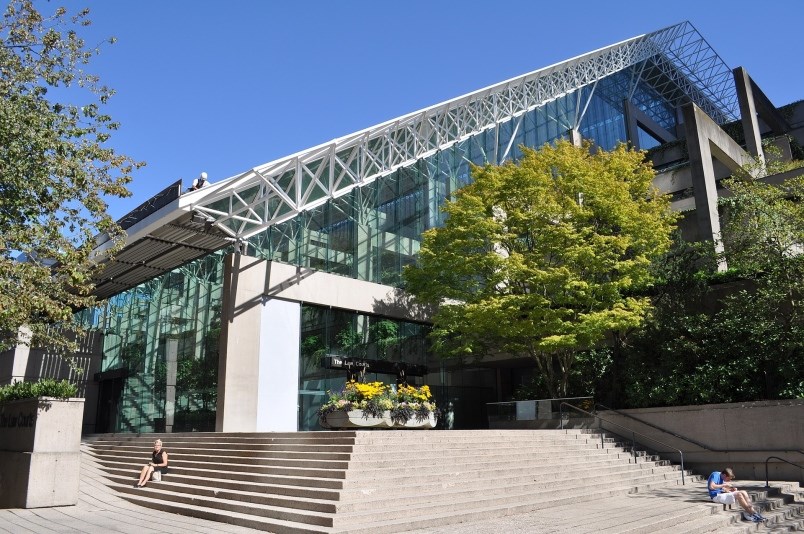Evidence against two men accused of first-degree murder in a May 2010 Cranbrook so-called mistaken identity killing falls short, and the pair should be acquitted, defense lawyers have told a B.C. Supreme Court judge.
Colin Raymond Correia and Sheldon Joseph Hunter are charged with first-degree murder in the deaths of Leanne MacFarlane and partner Jeffrey Todd Taylor.
“The Crown has not established that Correia committed the homicide of Leanne MacFarlane and Jeffrey Taylor,” Correia’s lawyer Brad Smith said Dec. 7 in closing arguments. “Mr. Correia is entitled to an acquittal on both counts of the indictment.”
Hunter's lawyer, Gloria Ng, said on Dec. 8 that there is no evidence connecting her client to firearms, nor evidence linking him to McFarlane and Taylor, and no evidence linking him to a site where clothes allegedly used in the killings were burned.
“The evidence heard by the court establishes Mr. Hunter’s innocence,” Ng said.
In May 2010, RCMP was called to a shooting at a rural residence off Highway 3/93 and found a woman dead and a man with severe injuries, of which he later died.
At the time, RCMP said it was a targeted incident but that the dead were not the intended victims. The Crown's theory is that the men went to a home near the East Kootenay city to kill a gang associate, Doug Mahon, who had vacated the property months earlier.
The court heard McFarlane’s sister-in-law had a masked man point a gun to her head when she went to the house. After the gunman and an accomplice ran off, Lise MacFarlane found her sister-in-law and Taylor.
After a years-long investigation, Correia and Hunter were arrested separately in Alberta in 2018.
However, as defense lawyers began final arguments in the long-running case, they told the judge the evidence was insufficient to warrant a conviction.
Organized crime groups
The court has heard the accused were connected with organized drug trafficking in the Cranbrook area.
However, Smith told the court the first-degree charge is inappropriate as there's scant evidence to suggest his client was part of an organized crime group or that an organized crime group had given the orders for the killings.
Moreover, Smith said, he said a person couldn’t be linked to a criminal organization “just because you have some friends of a bad element.”
And, he said, Correia did not dispute he knew people in a criminal organization in Cranbrook.
“Not every criminal who does business with a criminal organization ... necessarily becomes part of it,” Smith said.
Indeed, both Smith and Ng said video evidence of the men being in a bar proves nothing.
“Seeing people at bars, restaurants or sporting events is not probative of a criminal organization,” Smith said. “What is the evidence that the death of those people was for the benefit of or at the direction of a criminal organization?”
Ng said Hunter was seen on the video near a man allegedly involved in one of the crime groups for four seconds. She said there is no evidence Hunter was discussing a crime group Mahon was involved with.
Unreliable witnesses
During the trial, prosecutor Peter Favell urged the judge to accept evidence of one witness — Z — whose name is protected by court order and who was allegedly in the vehicle that picked up Correia and Hunter.
Witnesses saw the men in blood-spattered overalls near the killing site, Favell said. He told the court that alleged accomplices who got immunity agreements were with them when their clothes — including leather gloves and balaclavas — were burned with gasoline Hunter allegedly fetched from a vehicle.
Ng said none of the witnesses who said they saw the pair on the highway near the homicide scene recalled seeing blood-spattered clothing, nor was any blood found in a vehicle supposedly used in the escape.
Favell also told the court that Correia had connections to two handguns used, including one which had his DNA on it. One of the weapons on the crime scene also had DNA of other members of the crime group he was associated with, Favell said.
“The group passed weapons around,” Favell said.
And, Favell said, Hunter’s cellphone records indicate he was in the vicinity of the burn site when that occurred.
But, said Ng, a woman has testified Hunter was with her at the time of the killings, that phone records indicate he was doing a drug transaction in Cranbrook at the time.
Ng also told the court that some of the alleged accomplices were unsavoury witnesses. As such, she said their evidence should be disregarded as unreliable, inconsistent and at times contradictory. And while one officer had identified Hunter as being at the scene of an earlier Cranbrook shooting, he had been incarcerated in Kamloops Regional Correctional Centre at the time, she noted.




